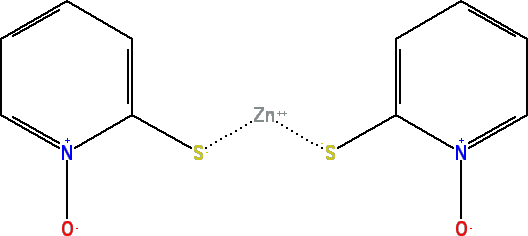Zinc Pyrithione
Safety Information
The U.S. Food and Drug Administration (FDA) permits the use of zinc pyrithione as an active ingredient in over-the-counter (OTC) dandruff, and seborrheic dermatitis drug products. The Expert Panel for Cosmetic Ingredient Safety has deferred evaluation of this ingredient because the safety has been assessed by FDA. This deferral of review is according to the provisions of the CIR procedures.
The European Commission’s Scientific Committee on Cosmetic Products and Non-Food Products Intended for Consumers (SCCNFP) evaluated safety data on zinc pyrithione. The Committee noted that zinc pyrithione has been used, as an anti-dandruff agent, for more than 60 years, in concentrations up to 1-2%. The acute as well as the subchronic toxicity was moderate to low, for both zinc pyrithione alone, or incorporated in market formulations.
In chronic toxicity experiments it was shown that an oral application of 500 microg/kg/day can be regarded as a dose that does not cause any adverse effects (NOAEL). No evidence of a carcinogenic response was seen when zinc pyrithione was applied topically up to 100 mg/kg/day or given orally up to 5 mg/kg/day in lifetime studies. The presence of zinc pyrithione did not impact upon the low irritation potential of the cosmetic formulations tested. The same observation was valid for a shampoo formulation investigated in a mucous membranes test. The appropriate experiments showed that zinc pyrithione alone as well as part of formulations had a low potential to induce contact hypersensitivity. In developmental toxicology studies, 2.5 mg/kg/day applied orally was the NOAEL. No reproductive effects were observed in when zinc pyrithione was topically administered up to 400 mg/kg/day. Toxicokinetic investigations revealed that percutaneous absorption of zinc pyrithione varied from approximately 0.03 to 3.4%. The distribution of radioactivity in tissues after oral administration of labeled zinc pyrithione showed that the radioactivity rapidly disappeared from the blood, and the primary route of excretion was via the urine. The residual radioactivity was low (4.5% of dose), zinc pyrithione was distributed throughout the body, and was not concentrated in any particular tissue. In mutagenicity/genotoxicity studies, zinc pyrithione showed no effects in any of the studies conducted.
https://ec.europa.eu/health/sites/default/files/scientific_committees/consumer_safety/docs/sccs_o_236.pdf
Pyrithione zinc is listed in the Cosmetics Directive of the European Union and may be used as a preservative in products rinsed off at a maximum concentration of 0.5%. Pyrithione zinc is not permitted in products for oral hygiene (See Annex VI). Zinc pyrithione is also allowed to be used for purposes other than a preservative in leave-on hair care products at concentrations up to 0.1% (See Annex III).
Link to the EU Cosmetic Regulation:
http://europa.eu/legislation_summaries/consumers/product_labelling_and_p…
